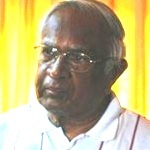The Economy Mahinda Rajapaksa Left To His Successors
By R.M.B Senanayake -April 2, 2015
In the last three years of MR’s regime economic growth was high and ranged from 7- 8.5%. The growth was driven by the government infrastructure investment program. Roads and expressways, ports and airports were built; funded by foreign borrowings mostly from China. The interest rates varied from 5-6%. But investments funded by foreign borrowing must provide a return both in local currency as well as earn or save the foreign exchange required for repaying the debt. The foreign debt was incurred largely by the government although during the last year the private sector banks and firms were encouraged to borrow in foreign currency and re-lend to the Government because the rate of interest was likely to rise for the government.
Foreign Funded Investments fail to produce returns
 These government investments failed to produce returns. But every year the government is required to pay interest and repay the foreign debt. The government requires extra revenue in Rupees to buy the required foreign exchange required to repay the foreign debt. But the government revenue has not increased as a result of these investments. So it has to borrow. The Ceylon FT says the Government borrowed Rs 31.2 billion from the Central Bank. Similarly the foreign exchange by way of export revenue has not increased. So the authorities have to fall back on the Official Foreign Exchange Reserve to repay the maturing foreign debt. So the government has to borrow fresh foreign loans to repay the foreign loans falling due for repayment. The authorities have had to borrow the foreign exchange required even to pay the interest on the foreign debt.
These government investments failed to produce returns. But every year the government is required to pay interest and repay the foreign debt. The government requires extra revenue in Rupees to buy the required foreign exchange required to repay the foreign debt. But the government revenue has not increased as a result of these investments. So it has to borrow. The Ceylon FT says the Government borrowed Rs 31.2 billion from the Central Bank. Similarly the foreign exchange by way of export revenue has not increased. So the authorities have to fall back on the Official Foreign Exchange Reserve to repay the maturing foreign debt. So the government has to borrow fresh foreign loans to repay the foreign loans falling due for repayment. The authorities have had to borrow the foreign exchange required even to pay the interest on the foreign debt.
Now, in the next few years about $ 5000-6000 million have to be repaid on foreign debt. The government requires both Rupees as well as dollars. The government revenue has not increased despite the large expenditure on infrastructure investments by the previous regime. The Rupees it is borrowing now from the Central Bank and the banking system since it exceeds the amount of savings by the public flowing into the money market. Economic journalists are saying that such money printing will cause runaway inflation. But such a result takes place only in a closed economy. In an open economy goods are imported and when the Aggregate Demand increases it spills over into an increase in imports. Since we are a highly trade dependent economy the excess demand caused by money creation leads to a worsening of the current account of the balance of payments. Our current account in the balance of payments already runs a huge deficit which is too high in relation to our capacity to repay it from our export earnings. The previous regime misled the people by ignoring the current account deficit and instead referring to the surplus in the over-all balance of payments. But that includes financing of the current account deficit from foreign fund inflows; either as foreign investments here or as foreign borrowings. But what it means is that we are borrowing foreign money or selling our assets to foreigners to fund the current account deficit. Any excess over the deficit goes to replenish our Official Foreign Exchange Reserve but it too is then built up by foreign capital inflows and not from our net earnings through the export of goods or services. In short we are rolling over foreign debt.Read More


